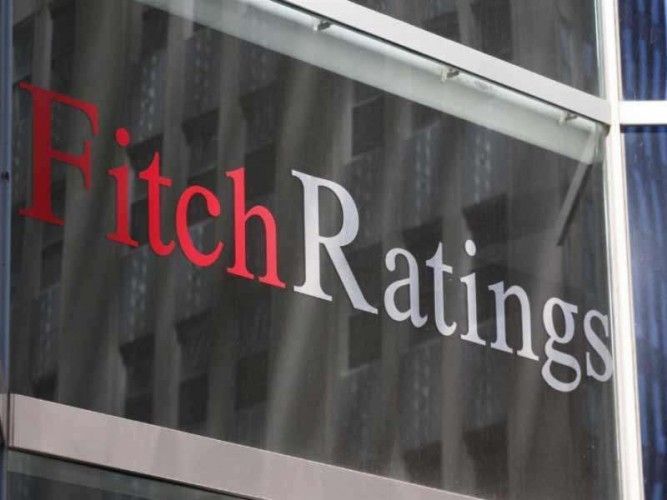Fitch Ratings, one of the three big credit rating agencies, published their latest assessment on Peru’s credit ratings. Result: everything remains unchanged with a stable outlook.
According to the Fitch Ratings press release from September 19, 2017:
- Peru’s long-term foreign currency Issuer Default Rating (IDR) was affirmed at 'BBB+' with a stable outlook
- Peru’s long-term local currency Issuer Default Rating (IDR) was affirmed at 'A-' with a stable outlook
- Peru’s short-term foreign currency Issuer Default Rating (IDR) was affirmed at 'F2'
- Peru’s short-term local currency Issuer Default Rating (IDR) was affirmed at 'F1'
- Peru’s Country Ceiling was affirmed at 'A-'
- Peru’s issue ratings on long-term senior-unsecured foreign currency bonds was affirmed at 'BBB+'
- Peru’s issue ratings on long-term senior-unsecured local-currency bonds was affirmed at 'A-'
Fitch’s key rating drivers for their assessment on Peru
“Peru's creditworthiness is underpinned by its track record of macro-policy credibility, consistency, and flexibility, which has delivered macroeconomic and financial stability. Strong fiscal and external balance sheets counterbalance the country's high commodity dependence, low government revenue base, financial dollarization and structural constraints in terms of income per capita, social indicators and institutional quality.”
Peruvian economic growth including GDP outlook according to Fitch
“Fitch expects Peru's economy to expand by 2.3% in 2017, lower than initially forecast due to El Nino-related flooding damage and delays to large infrastructure projects. Growth is now picking up driven by reconstruction spending and a small recovery in mining investment after three years of contraction.
Economic growth could rise to 3.7% in 2018 under Fitch's baseline scenario as public investment rises and private investment advances in infrastructure public private partnership (PPP) concessions that have been delayed.
The Peruvian economy has grown faster than the 'BBB' median, 3.6% versus 3.0% per year on average, over the past five years, although its potential growth rate is gradually converging toward the 'BBB' median.
Downside risks to Fitch's baseline economic forecast for 2018-2019 could materialize from further administrative delays to infrastructure projects, commodity price shocks, and subdued mining investment.”
Peruvian inflation rate and monetary policy according to Fitch
“Inflation remains low, albeit above target, at 3.17% year over year (yoy) in August 2017.
Peru's inflation-targeting monetary policy regime is credible, supported by the anchoring of inflation expectations within the central bank's 2%+/-1% target band, despite the presence of financial dollarization and transitory exchange-rate and weather-related shocks.
The Sol has appreciated 3% relative to the US dollar during 2017, limiting import-price pass-through.
The central bank has eased monetary policy, cutting the policy rate by a cumulative 75bps year to date to 3.5% in response to the weaker economic performance in 1H17.
Peru maintains a strong external balance sheet with a small current account deficit. The country remains a small net external creditor, 1.8% of GDP in 2017.
External liquidity (supported by USD62 billion in international reserves) exceeds 300% of current external liabilities, including non-resident holdings of the government's Sol-denominated bonds (43% of the total).
The current account deficit is expected to remain close to 2% of GDP during 2017-2019, which will be fully financed by FDI.
These strengths partially offset vulnerabilities from Peru's high dependence on mining exports, financial dollarization (29% of private credit), and non-resident capital flows.
The general government has a strong balance sheet with debt and interest burdens projected at 25.6% of GDP and 6.4% of revenues in 2017 (versus 41% of GDP and 7.1% revenues for the BBB median).
Peru's small fiscal stabilization fund, 4% of GDP, and unrestricted central government deposits, 4.9% of GDP, provide additional financing flexibility.
The government has increased its budget deficit target to 2.9% of GDP for 2017 and 3.3% for 2018 to finance reconstruction following El Nino flooding damage (costing 3.2% of GDP in total over four years). The government plans to draw 1% of GDP from its stabilization fund for reconstruction over the period and use natural disaster credit lines from multilaterals.
The remainder of the government's gross financing needs (deficits and amortizations totalling 3.3% of GDP in each of 2017 and 2018) will be met principally with central government deposits (including pre-financed resources for 2017) and Sol-denominated bond issuance.”
Peruvian government revenues and taxes as evaluated by Fitch Ratings
“Government revenues have fallen to 18.3% of GDP in 2017 from their peak of 22.8% in 2013. The Kuczynski administration will need to boost government revenues to meet its fiscal consolidation target of returning to a primary budget surplus by 2021.
To date, the government has raised the corporate income tax rate, implemented a tax amnesty for the repatriation of taxable foreign assets during 2017-2018, and taken steps to broaden the tax base.
However, lower economic growth and difficulties reducing tax evasion pose risks to closing the revenue gap.
Fitch's baseline scenario assumes a more conservative rise of tax revenues than the budget forecasts and expects that the administration will if necessary make spending adjustments to meet its fiscal consolidation path.”
Source: fitchratings.com


